It can be called “The Lighthouse” because the Elbow Reef Lighthouse is the only lighthouse of its kind remaining in the world; the only hand-wound, kerosene lit lighthouse – no electricity involved.
Visiting this lighthouse was probably the most memorable experience of our time in the Abacos on our first trip. I wrote a detailed blog post then so that I would never forget this unique experience; especially the evening we joined Jeffrey, the lighthouse keeper, for the lighting of the lantern. What a special experience that was – “Candy-Striped Lighthouse.”
The Elbow Reef Lighthouse is so special that it deserves another blog post; I just can’t resist it. It’s part of our daily view here in Hope Town, part of every day and every night. You are aware of its presence even when you aren’t consciously thinking about it.
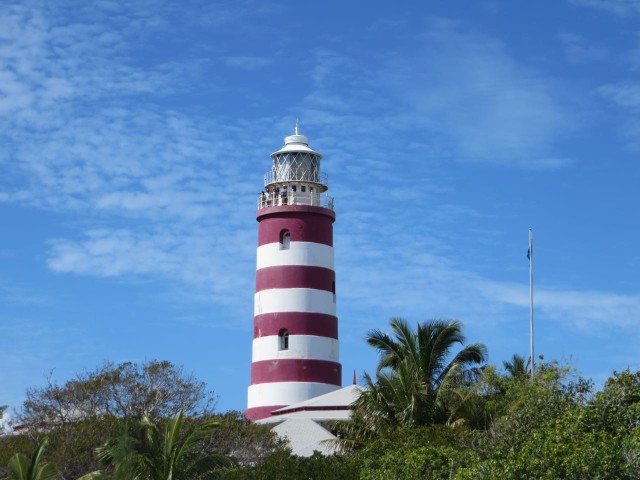
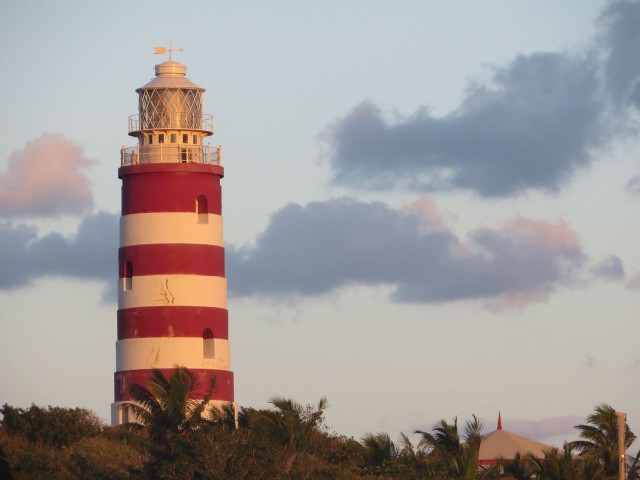
Living in our trawler we soon realized that when the boat faced southeast, the lighthouse was visible to us as we lay in our cabin, morning and night. Sometimes, depending on the directions of the boat and the night sky, we could even see the piercing beam of light passing over our heads as we lay in bed, looking upward through the hatch.
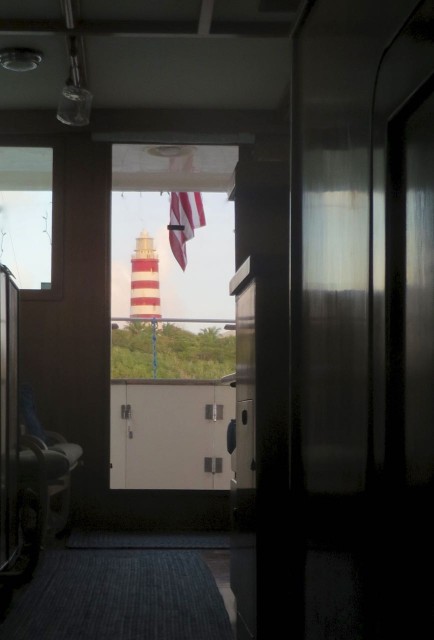
In the past two years, the Elbow Reef Lighthouse Society (ERLS) has been actively working to preserve this icon of the Bahamas and maintain the “traditional hand-powered technology.”
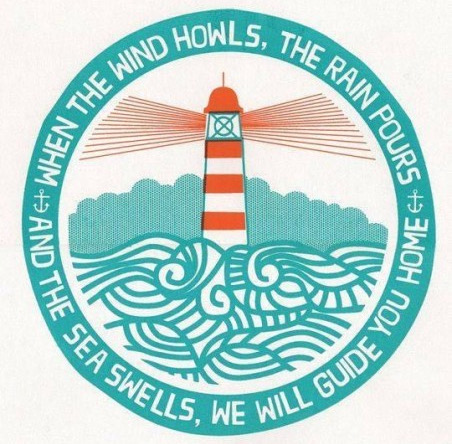
- Built in 1864 with a fixed white light that did not flash or turn
- Major refit in 1936 with the installation of a rotating first order Fresnel lens, described on nautical charts as ”GP FL W (5) EV 15 SEC 120 FT 15M”. Translation = a series of 5 white flashes every 15 seconds, 120 feet above sea level, visible for 15 nautical miles.
- That Fresnel lens and rotating equipment is still working today.
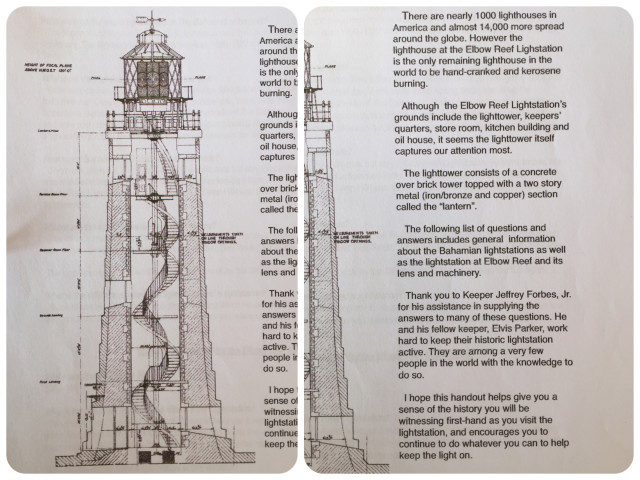
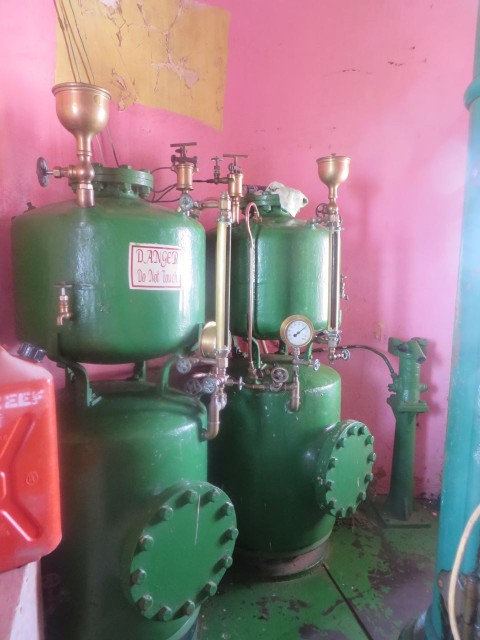
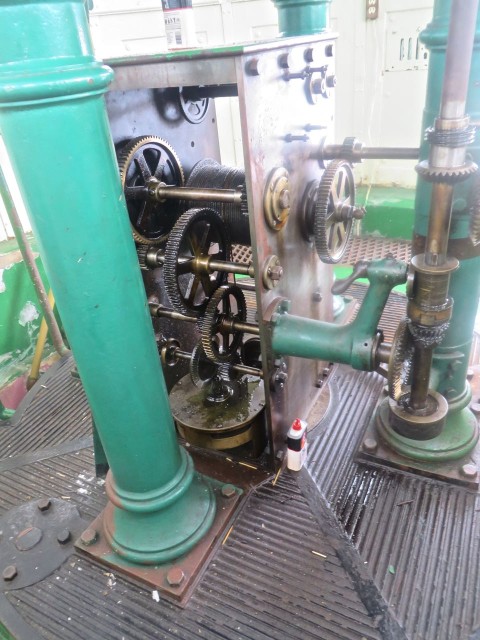
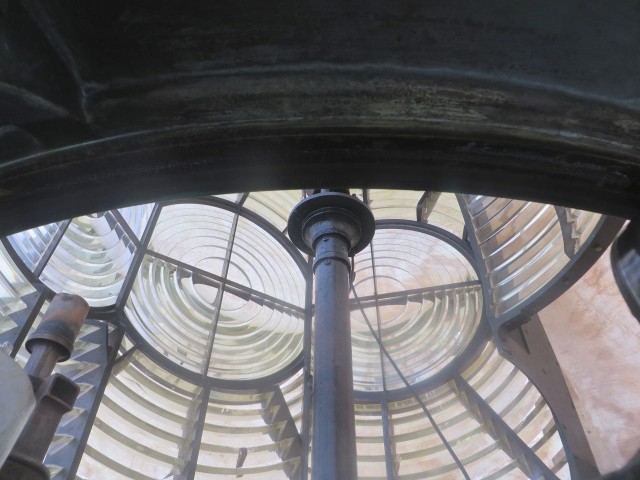

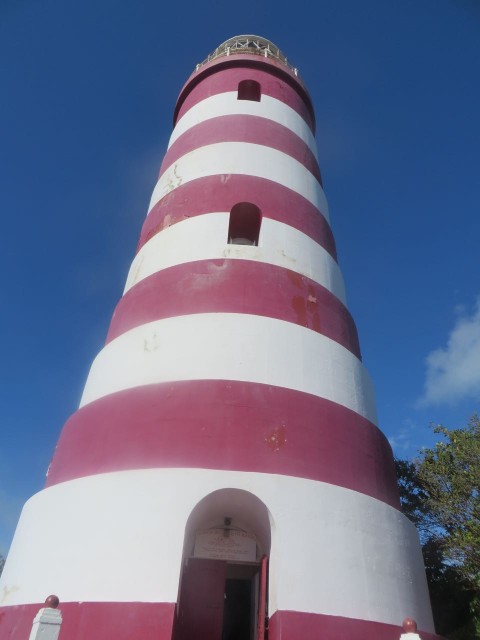
The Candy-Striped Lighthouse is in need of serious work again in order to preserve this most-recognized Bahamian landmark. The Elbow Reef Lighthouse Society (ERLS) is undertaking the challenge of this major restoration project.
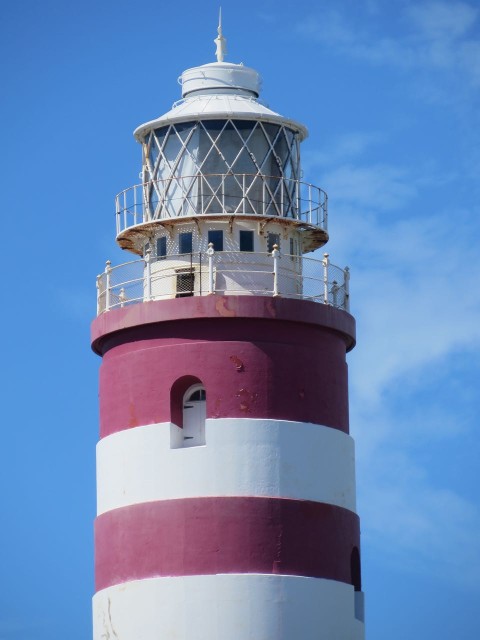
It’s a treat to see the lighthouse every day, but part of the experience is to also climb to the top. One day, while our guys were off doing guy things, Marcia and I decided to dinghy over to the lighthouse and climb to the top.
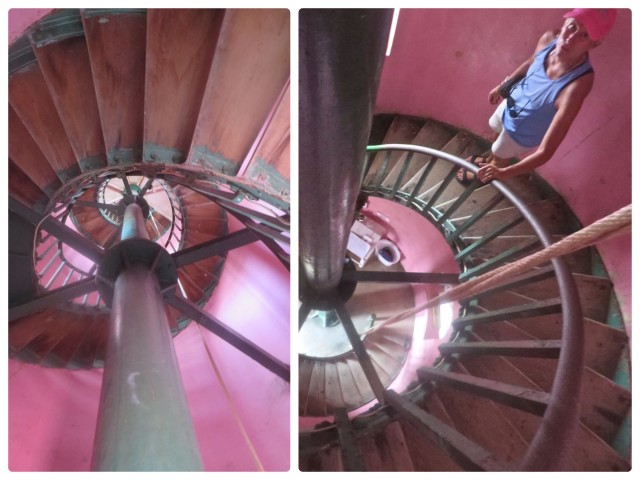
89 feet high, 101 steps to the lantern room.
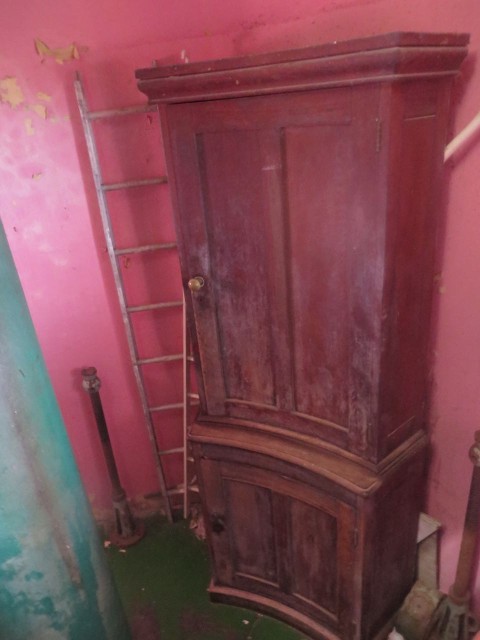
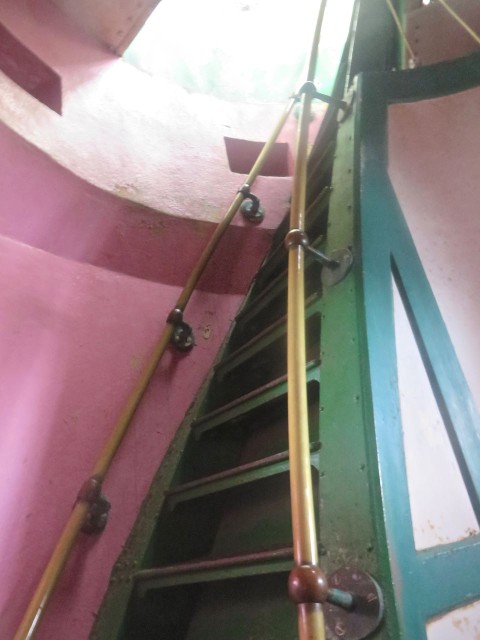
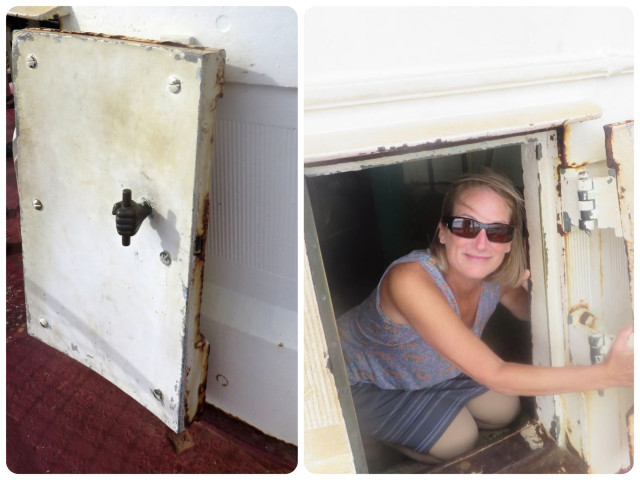
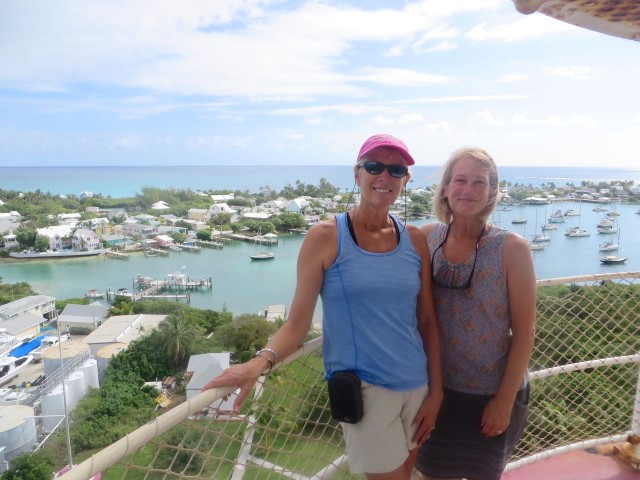
The views in all directions are amazing.

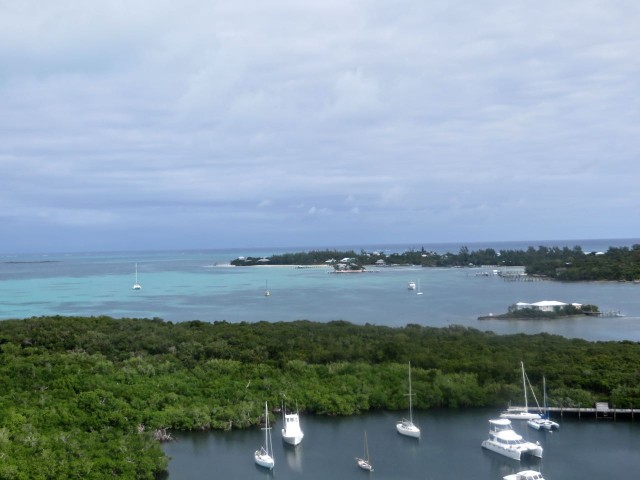

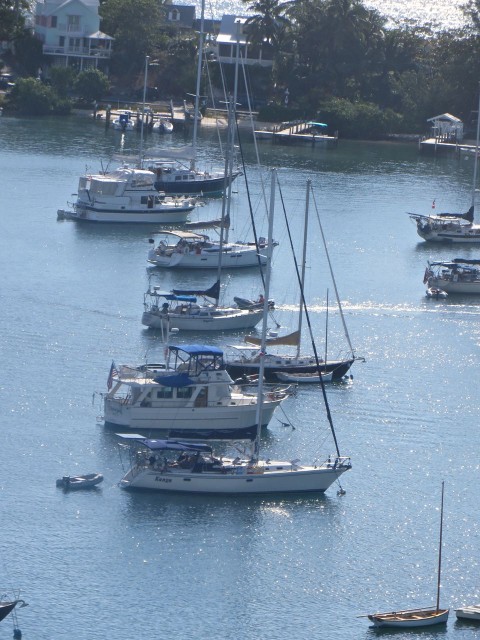

Regretfully now, I wish I had made that climb more often. It is too easy to let the days slip by, thinking that there will always be more time.
In January of this year, a little gift shop at the base of the light house was opened. The building is simple and suits the lighthouse grounds perfectly. The items are mostly clothing with the Lighthouse Preservation Society logo, as well as backpacks, jewelry made and donated by local cruisers, and solar Luci Lights, a very popular item. All profits are returned to the ERLS for preservation of the tower.
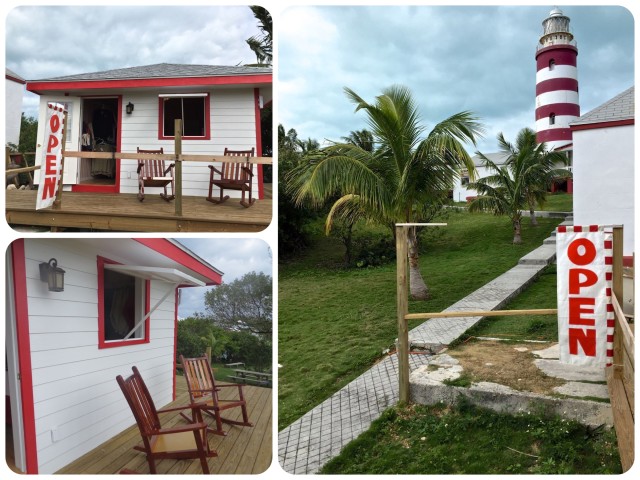

I added to my lighthouse souvenirs – a shirt and the book, UP Keeps the Light On. There is a wonderful story about this book in the summer 2015 issue of Abaco Life. “UP” is a lizard character featured in an earlier book, UP Cycles to School. Heather Forde-Prosa, a graphic artist, co-owner of the local Hope Town Coffee House, and part-time art teacher, worked with the children of Hope Town Primary School to write the story and create the artwork.
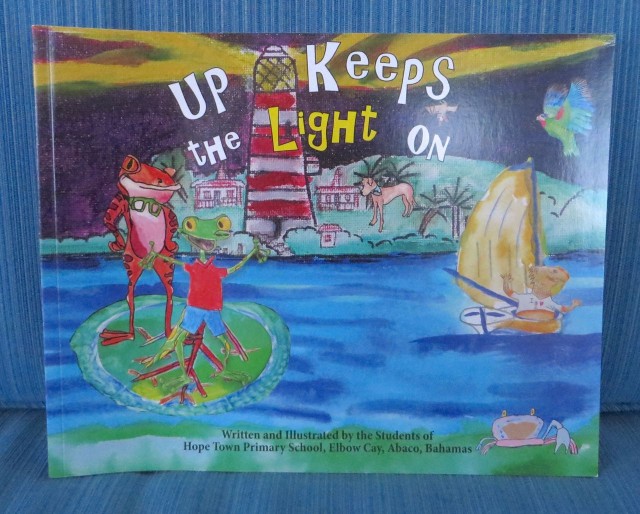
In addition to my ERLS shirt and my UPS book, I could not resist one more lighthouse treasure to bring a smile to my face. At our Christmas dinner celebration at the Abaco Inn, I noticed an original watercolor of Elbow Reef Lighthouse in the ladies room (yes, behind the door in the ladies bathroom.) I liked it a lot, but needed to let the idea simmer for awhile. It simmered and percolated for about 6 weeks. Every time we rode our bikes down to the Abaco Inn to view the big surf after those storms, I would stop in and look at the painting again. Tom, the manager, was a delight to talk with about the painting. He, too, has been integral to the preservation of the lighthouse. When he told me that the money from the sale of the painting all goes to the ERLS, my decision was made – we dinghied back to the Abaco Inn again and bought the painting; much easier to bring back in a dinghy than on a bike. When we get home I will have it re-framed in a natural distressed wood, I think, resembling driftwood.
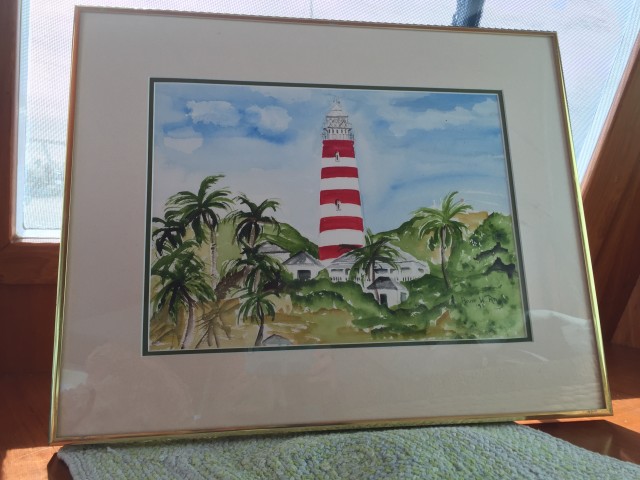
I will still be able to see my favorite lighthouse every day, at home in New England.

Anthony Baker
Love the painting…what a treasure